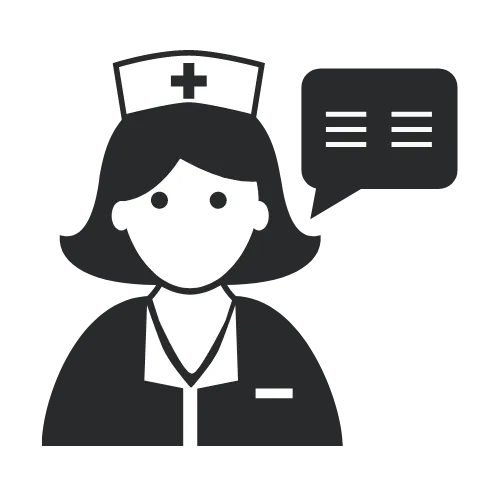Careers
Learn more about the career opportunities we offer at TMC Care Services.

Companionship Services
Full Employment Description
Meal preparation and serving -Prepare and deliver a meal for the client
Transportation and escort services – Drive and accompany the client out in the community
Housekeeping to include sanitation – Ensure the home is clean; furniture are dusted; linen are changed; floors are mopped and swept and trash are emptied
Home safety – Home is secured at all times
Handling medical emergencies in the home – Call 911 in the event of an emergency and perform first aid as needed
Shopping – Taking the client to the store to purchase items
Assistant with appointments – Assist client with setting appointments
Laundry – Completing the laundry
Changing linens – Changing the bed sheets as need
Trash disposal – Removing trash from the home
Diet – Implementing special diets

Personal Care Services
Full Employment Description
Bathing – Provide assistance with bathing
Toileting – Assist the client with using the toilet
Grooming – Hair combing, getting dressed
Shaving – Shave beard or mustache
Dental care – Brushing teeth
Dressing – Putting on clothes
Eating – Feeding the client
Ambulation – Assistance with walking
Transfer of clients – Aid the client with transferring from bed/chair to wheelchair and vice versa
Medication Assistance – Remind the client when to take his/her medications
Taking of vital signs – Take blood pressure; check respiration and document the results in the client’s chart
Basic first aid – Assistance to a sudden illness, condition or situation; assistance to client in physiological distress
CPR – The manual application of chest compressions and ventilations to patients in cardiac arrest, done in an effort to maintain viability until advanced help arrives
Home management – Create a harmonious environment with client and staff
Home safety and sanitation – Ensure the home is secured at all times and the trash is emptied
Infection control in the home – ensure there are no signs of infestation in the home. Use PPE as needed when delivering personal services to the client
Proper nutrition – Ensure special diets are followed as documented by the physician

Nursing Services
Full Employment Description
Ambulation – Assist the client with walking from one place to another
Transfer – Assist the client with moving from bed to wheelchair or vice versa
Positioning of clients – Is used to move immobile clients who cannot sit up or who have appliances or casts that do not fit into a wheelchair
Observation – Observe the client for any changes in condition such as but not limited to, signs of pain, change in appetite, weight loss/gain, change in vital signs and change in complexion
Assessment – An identification by a nurse of the needs, preferences, and abilities of the client. Assessment includes an interview with and observation of the client by the nurse and considers the symptoms and signs of the condition, the client’s verbal and nonverbal communication, the client’s medical and social history, and any other information available. Among the physical aspects assessed are vital signs, skin color and condition, motor and sensory nerve function, nutrition, rest, sleep, activity, elimination, and consciousness
Wound care – A nursing intervention to prevent wound complications and promotion of wound healing
Catheter care – Make sure that urine is flowing out of the catheter into the urine collection bag. Make sure that the catheter tubing does not get twisted or kinked. Keep the urine collection bag below the level of the bladder. Make sure that the urine collection bag does not drag and pull on the catheter. Check for inflammation or signs of infection in the area around the catheter. Signs of infection include pus or irritated, swollen, red, or tender skin. Clean the area around the catheter twice a day using soap and water. Dry with a clean towel afterward. Do not apply powder or lotion to the skin around the catheter. Do not tug or pull on the catheter.
Ventilator care – Focused on reducing or eliminating dependence on a ventilator for breathing
IV therapy – Is the infusion of liquid substances directly into a vein.
Diabetic care/teaching – Provides quality diabetes care and education for people with diabetes and their families and for those at risk for developing diabetes
Lab blood draws – Removal of blood, usually by venipuncture to provide to a lab for testing.
Injections – Using a needle to inject a drug into the client’s body.
Colostomy care and teaching – Removing and applying the colostomy pouch. Ensure the area is clean to prevent infections. The nurse shall train the client on how to care for the colostomy bag and area.
Tracheostomy care – Suctioning of the tracheostomy tube and changing the dressing.
Enteral/parenteral feedings care/teaching – Delivery of a nutritionally complete feed, containing protein, carbohydrate, fat, water, minerals and vitamins, directly into the stomach.
Parenteral feeding – Getting nutrition into the body through the veins.
Post-op/ recovery care – Providing services to the clients based on doctor’s order following an operation.
Medication Administration/ Teaching – Administering medication to a client and teaching a client about the risks and benefits of the prescribed medication.
Medication Monitoring – Ensuring the clients have levels checked as applicable per the medication prescribed; making sure the medication is given as prescribed; refills are completed in a timely; review of different classes of drugs and various physicians are aware of the medications prescribed by each physician.
Job Application
Submit the job application below or download the file and fill it out by hand.
If selecting this option, please email your application & supplemental documents Info@TMCCareServices.com
Put “TMC Job Application” in the Subject Line.

Follow Us
Follow Us
TMC Care Services, LLC. provides in-home care for individuals who are disabled, autistic, may have suffered traumatic brain, injuries, medically fragile, mentally disabled, or handicapped.
Contact Us
Info@TMCCareServices.com
404-999-0906
56 Perimeter Center E Ste 150 Atlanta Ga 30346
© Copyright 2023. TMC Care Services LLC. All rights reserved.
